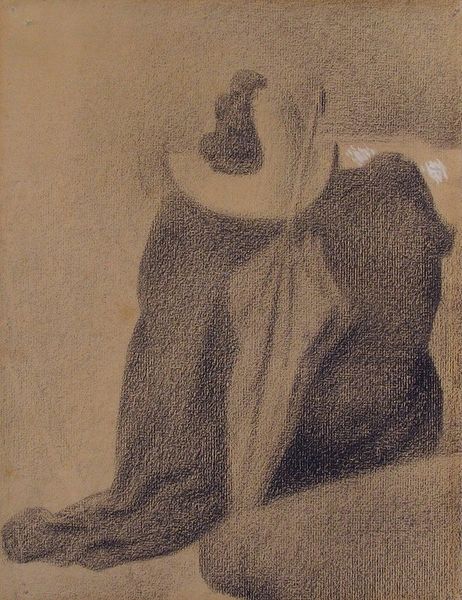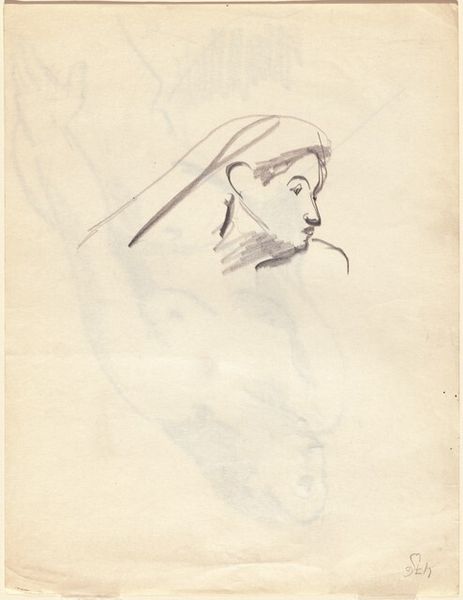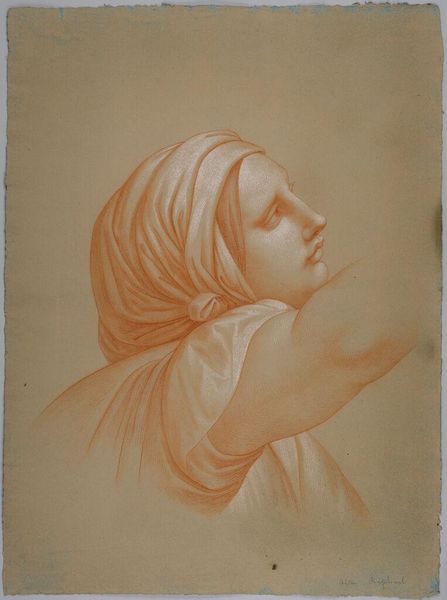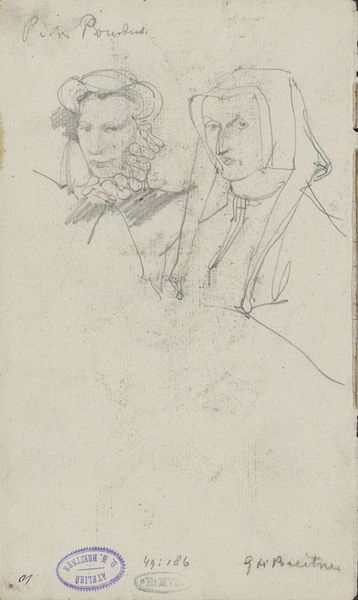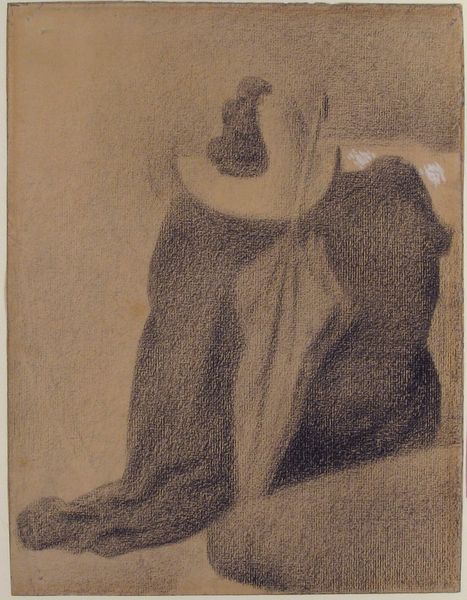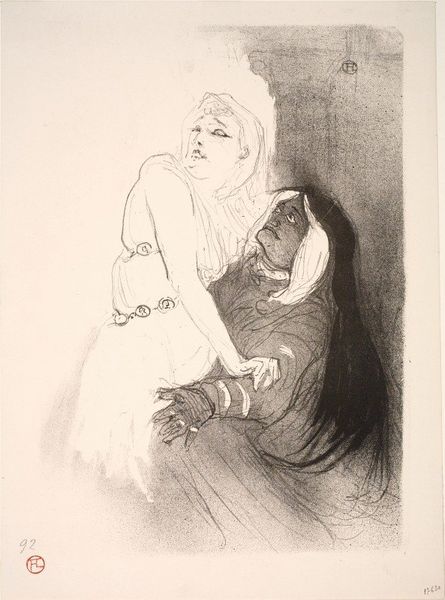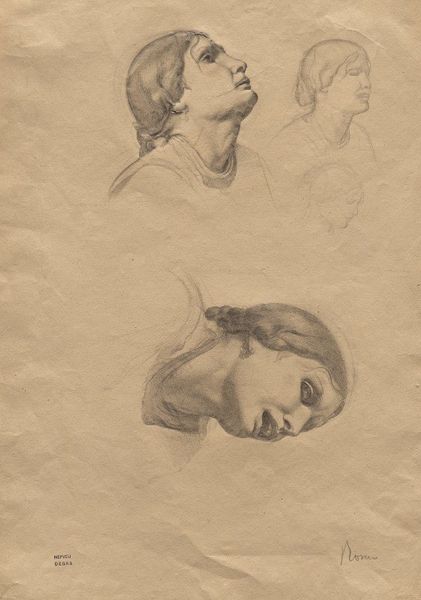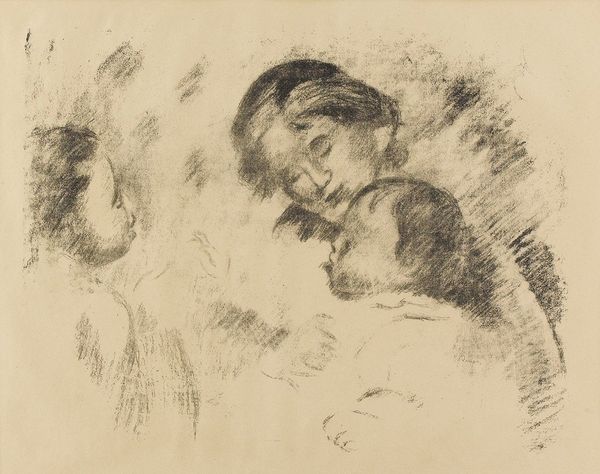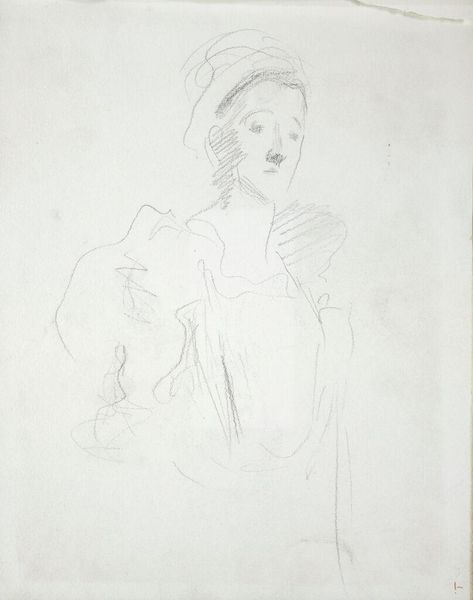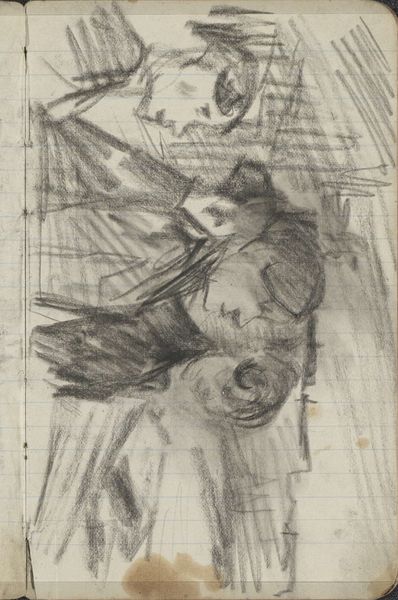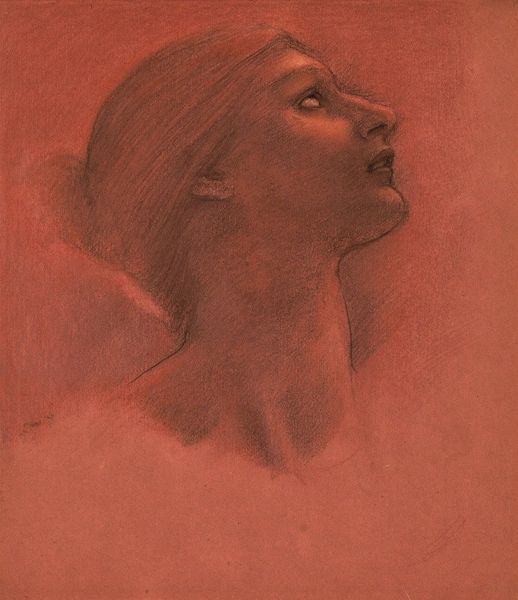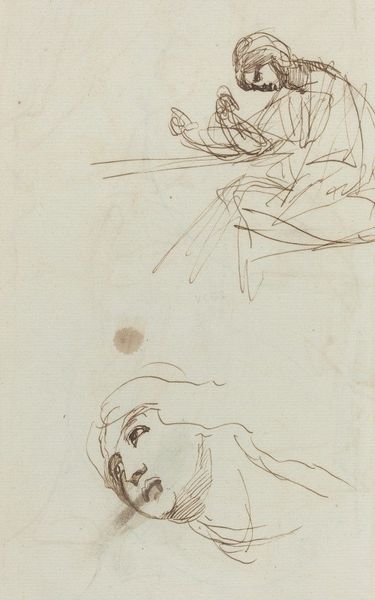
drawing, pencil
#
portrait
#
drawing
#
facial expression drawing
#
pencil sketch
#
figuration
#
portrait reference
#
pencil
#
symbolism
#
animal drawing portrait
#
portrait drawing
#
facial study
#
facial portrait
#
pre-raphaelites
#
portrait art
#
fine art portrait
#
digital portrait
Copyright: Public Domain: Artvee
Curator: Here we have Edward Burne-Jones's "Study for 'The Baleful Head'," rendered in pencil. I'm immediately struck by the texture, a soft blending that gives it almost an ethereal quality. What are your initial impressions? Editor: There's an undeniable melancholic weight to this drawing, a kind of weary resignation. The averted gaze of the figure above intensifies that sense of emotional distance and maybe even quiet defiance in the face of Medusa’s power. Curator: Interesting. Let’s talk process; preliminary sketches like this offer invaluable insight into the artist’s workflow. Burne-Jones seems to meticulously map out his composition, exploring tonal values and facial expressions, perhaps experimenting before committing to a larger work. Editor: Right, the 'male gaze' is being confronted here. This could reflect the socio-political tensions around female representation at the time. Medusa, often demonized, is given an oddly sympathetic portrayal, suggesting a broader commentary on power, victimhood, and the subversion of dominant narratives. Curator: You're right; her depiction diverges sharply from earlier, monstrous representations. It prompts questions about labor, too—the hours, materials, the social and artistic economies involved in producing such a study. Pencil might seem basic, but within this piece it displays meticulous skill, showcasing a spectrum from the barely-there wisps of hair to the denser, more defined shadows that shape the face. Editor: I can't help but consider its relevance to contemporary discourses on gender and representation. The drawing's refusal to sensationalize or objectify its subject feels particularly poignant, even radical, especially now. It provides us space for interpreting classical myth as more about collective trauma than female monstrosity. Curator: This sketch serves less as a definitive statement and more as an invitation into the artist's process, a rare chance to engage with the development of his vision and consider his technical skill in relation to social forces. Editor: Absolutely. It reminds us how art can engage in powerful dialogue with its historical context, continually prompting us to reconsider the meaning of well-worn narratives and address ongoing inequities.
Comments
No comments
Be the first to comment and join the conversation on the ultimate creative platform.
